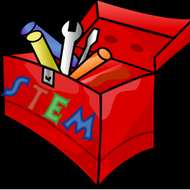
(View Complete Item Description)
Students are introduced to the basic principles behind engineering and the types of engineering while learning about a popular topic - the Olympics. The involvement of engineering in modern sports is amazing and pervasive. Students learn about the techniques of engineering problem solving, including brainstorming and the engineering design process. The importance of thinking out of the box is stressed through a discussion of the engineering required to build grand, often complex, Olympic event centers. Students review what they know about kinetic and potential energy as they investigate the design of energy-absorbing materials, relating this to the design of lighter, faster and stronger sporting equipment to improve athletic performance and protect athletes. Students consider states of matter and material properties as they see the role of chemical engineering in the Olympics. Students also learn about transportation and the environment, the relationship between architecture and environment, and the relationship between architecture and engineering.
Material Type:
Activity/Lab,
Lesson Plan




















